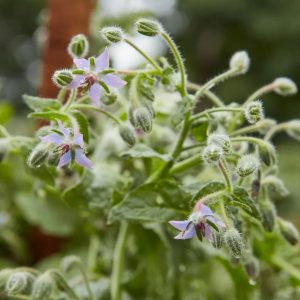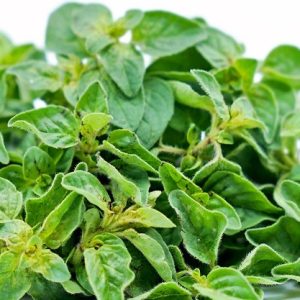Description
Sage is a green leafy herb with a bushy growing habit. The leaves are characterized by their greyish green color, fuzzy texture, and silvery bloom. Young leaves may have a purple tint. Sage offers a musky, camphorous aroma and an earthy, piney flavor. Sage can be more intensely flavored when dried. Sage should be used sparingly as its flavor can overpower other flavors. It can be used fresh, although it is often used in cooked applications. Chop fresh leaves for herbed rubs, marinades, and dressings. Add fresh leaves to clarified butter for tossing with pastas or blanched vegetables. The aromatic herb pairs well with pork, sausage, and lamb, as well as poultry and strong cheeses. Sage can be dried and can be used for tea or ground and used as a spice.
Sage is an excellent source of vitamin K and a source of fiber, calcium, iron, and manganese. The nutrient-dense herb also contains copper, magnesium, zinc, and omega-3 fatty acids, as well as trace amounts of some B-complex and A vitamins, folate, vitamins C and E, beta carotene, lutein, and zeaxanthin. Sage leaves contain flavonoids, volatile oils that include terpines, rosmarinic acid, tannins, camphor, salvene, cineol, and pinene.




Reviews
There are no reviews yet.